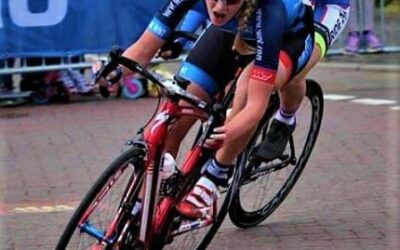Part one
Are you a cyclist?
—————————————————————————————-
Do you have neck pain? Lower back pain? Knee pain?
These are the 3 most common complaints that cyclists bring into our clinic. But why?
With the UCI Road World Championships coming to our doorstep in just less than 2 weeks time many of us keen cyclists will be eager to get out on our bikes and enjoy the last of the summer sunshine whilst being able to spectate one of the most prestigious events on the cycling calendar. But worried about being in pain when you get on your bike? Maybe time to shed some light on these common areas of complaint.
There will be 3 parts to this blog. Part one; knee pain.
Pain is usually felt at the front of the knee and above, below or medial to the kneecap. So let’s talk anatomy. Below is a picture of the muscles attaching to and around the knee joint.

The most predominant muscle group being the quadriceps. As the name suggests by ‘quad’ meaning four, there are four muscles within this group that powerfully drive the knee into extension. We use this muscle group to power us up hills and drive us along the flat. This muscle group is one of the main culprits behind most cyclists with knee pain. But just because it’s the culprit doesn’t mean it’s all to blame. Many factors link to the quadriceps becoming an issue for cyclists. It can be due to the muscle group being too strong, being partly weak, poor technique on the bike, a poor bike fit or biomechanical issues above or below the knees that load the quadriceps and the knee joint itself. This blog could be turned into a 5000-word essay but let’s try to keep it simple and to the information you want to know: how to prevent it becoming an issue and what to try to do if your experiencing knee pain. Although prevention and treatment do overlap in a lot of ways, I have tried to split these into two categories to make it a little clearer.
Prevention
- Make sure you have had a bike fit – saddle too high usually leads to posterior knee pain due to overstretching of the hamstrings, too low you load up the knee joints and shorten through the quadriceps. Issues with cleat positions often cause issue with the knees as well.
- Strength and conditioning – Quadriceps are often over-dominant, strengthen your back, glutes, hamstrings as these are lengthened in a bike position and often get a bit lazy leaving all the work to power your bike to your quadriceps, then hey presto…knee pain!
- Stretching – Cyclists (myself being one of them) are notoriously bad at stretching! We tend to ride, café stop, get back on the bike ride home then get on with the rest our day. Stretching the quadriceps, glutes, hamstrings, calves, lower back regularly can have a profound effect upon the maintenance of knee pain.
Self-treating
- Ice!- Often the knee joint or the tendons/muscles around the joint have become inflamed when your experiencing pain in the knees, ice is a great way to calm down any inflammation and help aid the healing and recovery of the effected tissues
- Foam rolling – Foam rolling the front of the quadriceps can lengthen through these tissues and ease the pressure they exert onto the knee joint.
- Cadence, gearing and terrain – Most cyclists will not want to stop and rest whilst suffering with knee pain, so if your one of these people who doesn’t like to rest why not alter the gearing and cadence to off load the joints. Make the gearing lighter and spin the cadence higher and keep to the flat. This will take some load out of the muscles and joints and give more emphasis onto your cardiovascular system; you will feel like you’ve had a great workout without the detriment to your knees.
—————————————————————————————-
Osteopathy – So where does this come in? Well, all the information above is useful but it’s very generic and is a worth a go if you are looking to prevent any knee issues or to ease your knee pain at home but it important to really understand what the root cause of the pain is. Osteopaths will take the whole body into consideration. Whilst it might be your knees causing the problem it may actually be coming for your back, for example. Or it maybe not be a muscle issue but more of a joint and cartilage issue. In an Osteopathic consult we will take into consideration all the factors above and tailor make home care advice to the individual in order to specifically target your requirements. We will also provide hands on treatment to help off load muscles and joints under stress and rebalance the body. So why wait any longer? Inspired by the professional cyclists at the UCI World Road Race Championships who often seek regular medical advice to combat bike related injuries, why not seek some help yourself?
Contact the Good Health Centre in Leeds for more information regarding Osteopathy and injury prevention and management.
Thanks for reading, if you enjoyed part one, part two will be on lower back pain.
Brit Tate (Osteopath at the Good Health Centre Leeds. Ex cyclist now turned triathlete).



0 Comments